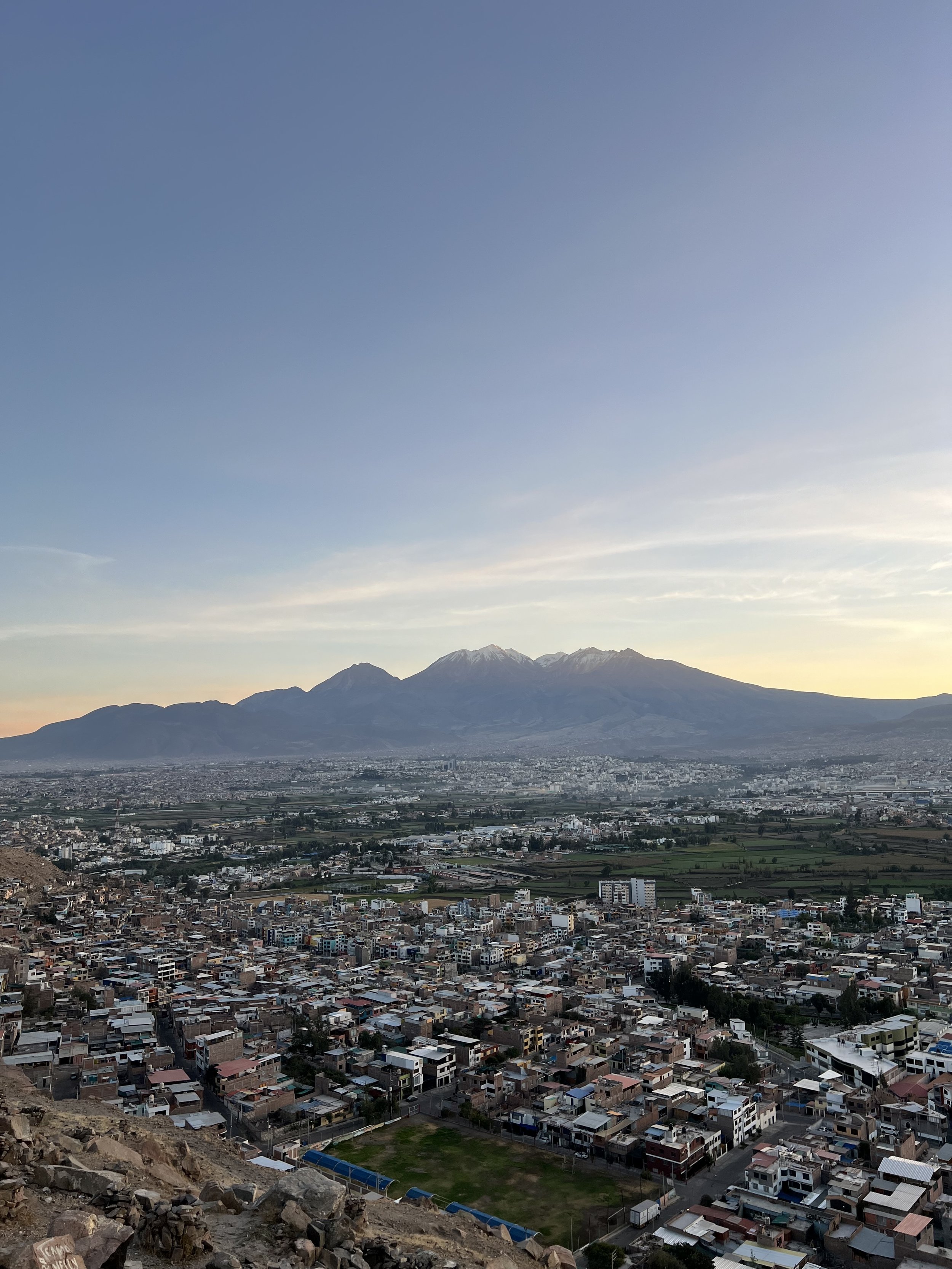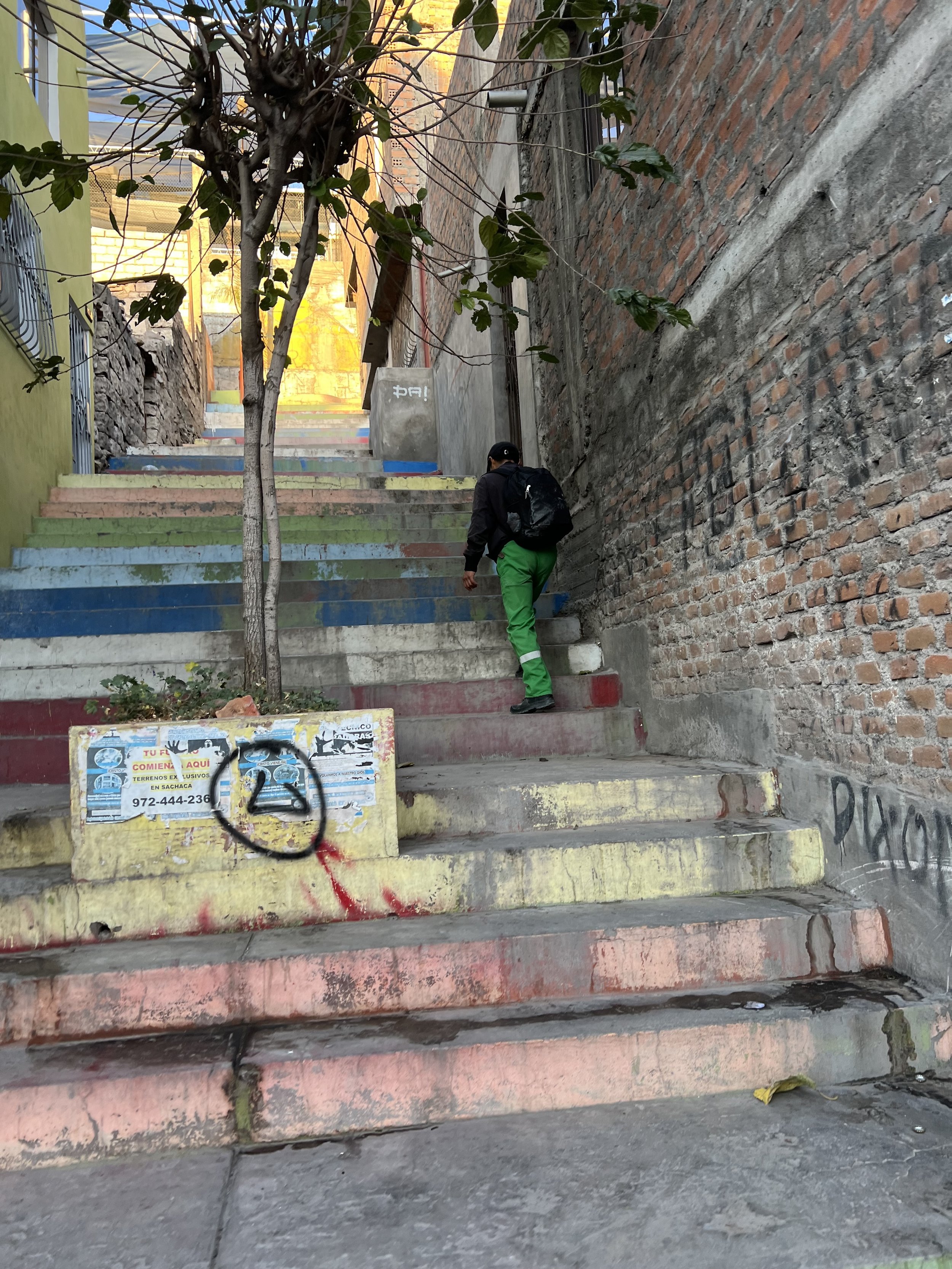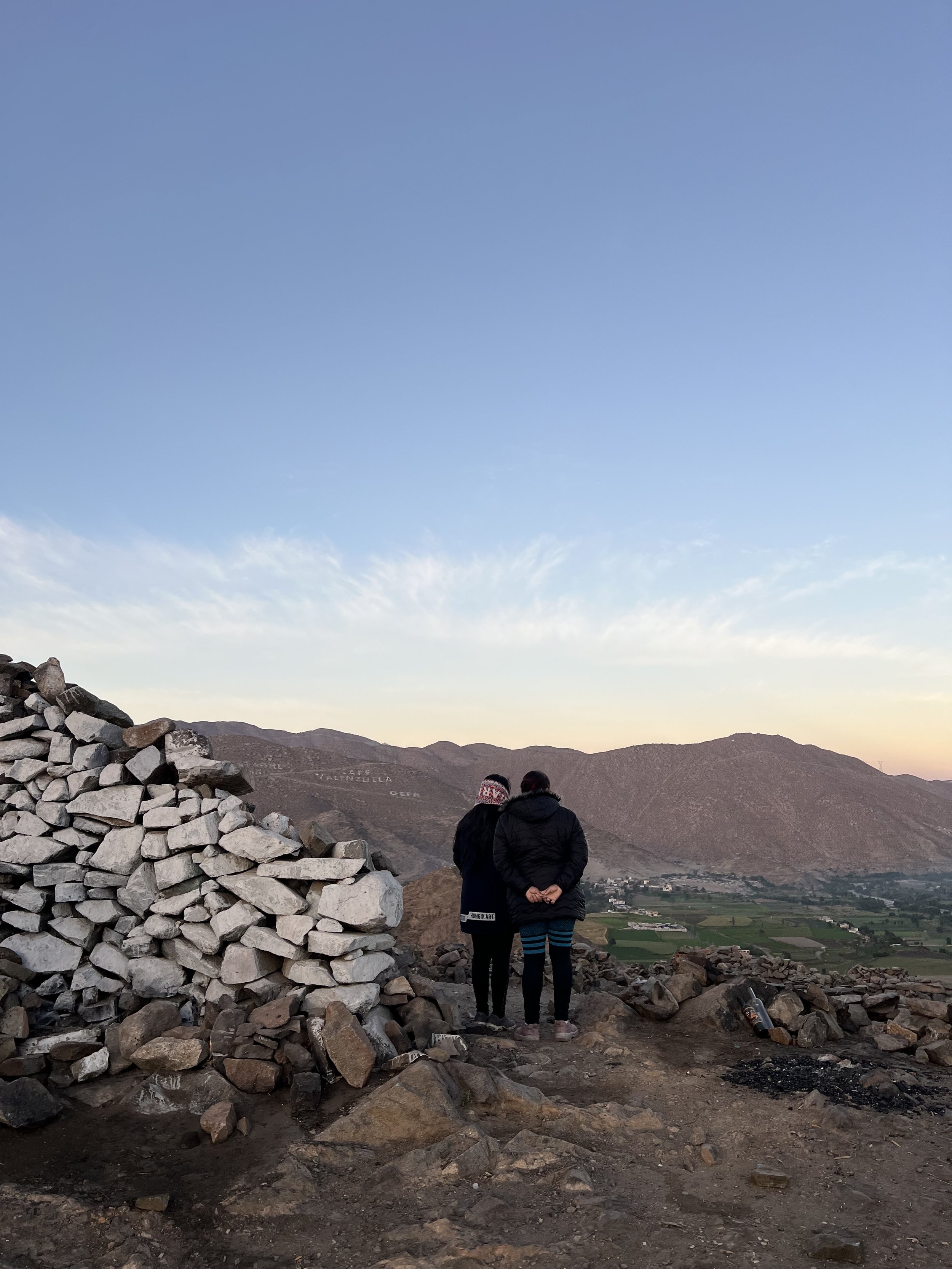(This article was originally shared in the format of an Instagram story. The original is linked as a highlight on my profile.)
Buenos días from Hunter Hill! I love to get above the city, and this is one of my favorite spots to see the city from a different perspective. I didn’t get the chance to take HULA 2024 up here, so I decided to document it with pictures and words for them, and also for you. Some of you have been up here with me before, so for you I hope this is a helpful reminder of our shared prayer in Arequipa.
What thoughts and emotions came to you when you first got to Arequipa? When you started to navigate its streets, took your first combi ride, walked by yourself for the first time to the historic center…what sort of disorientation did you feel? Was it exciting? Was it scary? What things did you immediately notice as different or foreign?
What was it like to see Arequipa? We’ll come back to that.
There are two psalms that have been significant to me over the years and I think about often in Arequipa. The first is Psalm 63: “Oh God, you are my God, earnestly I seek you, my very being thirsts for you, my body longs for you in a dry and weary land where there is no water…”
Arequipa is a desert—a dry and weary land, literally. But I also believe it’s parched spiritually. Even though the city is full of religious symbols and church buildings, I have a sense of this dearth, a lack of connection to something deeper and more meaningful, to the ground of all being.
But there is a thirst.
“My very being thirsts for you…”
I’ll never forget one rainy season, after a month straight of daily afternoon rain, I looked up at this hill and it was covered in green. I couldn’t believe it because it’s one of the most barren, rocky places I knew, and for years I had only seen it brown, dusty, rocky. But all that time there had been seeds there. Seeds, waiting for access to water.
There are seeds out there, lying dormant, just waiting for access to water so that they can truly live…
The second psalm is 125, slightly amended: “As the volcanoes surround Arequipa, so Yahweh surrounds the people, both now and forevermore.”
I am not the one who is bringing God to this place, rather, God is already here. And has been, since way before I thought to come to Arequipa. And really the only way I can get up and go about my life and ministry here is to recognize that God is here and at work and my job is to open my eyes to it, tap into that deeper reality, and participate.
As I look out on this sea of houses, I acknowledge that each of 1.2 million people here are made in God’s very image, so they have this inherent capacity to reflect the divine into the world (and the world back to God!). And while many may live unconscious of that definition of what it means to be human, there are hundreds, thousands—tens of thousands?—who know and are part of the whole earth being full with the knowledge of the glory of Yahweh…as the waters cover the seas (h/t Habakkuk).
God surrounds this city, as the volcanoes remind us daily, and is present in and throughout, to the city’s suffering and injustice, in the inequality and hurt, and in the efforts, both small and large, to bring and be love in this space.
One of the reasons that I like to come up here is that, from above, a lot of the anxiety and disorientation from being in such a “different” place, just melts away.
When you’re in it, walking, zipping around in a taxi, or holding on for dear life on the combi—when you’re in it you’re in it. And we have tools for staying grounded as we’re in it (think the Lord’s Prayer in a crowded/chaotic place, or meeting a stranger and carrying them with you in prayer for a week, or the breath prayer).
But it’s also helpful to zoom out occasionally, and see what that does to our sight. What seems like chaos when you’re in it, can seem a bit more organized from above (even if it’s just organized chaos), because it is, in fact, the result of centuries of tensions.
You are here at this point in history (you are where you are reading this), and your challenge, just like it was for three months in a new country, is depth of insight: to see more deeply, and thus, more clearly.
To look beyond, into, and see.
Up here, the sea of houses and flat rooftops start are representative of families. Broken families, yes, with a lot of hurt and trauma. Absentee or abusive fathers indicative of machismo. Mothers who bring, sustain, and protect life.
But also families who love each other, who work hard, who take care of each other. Men who reject the stereotypes that society permits and decide, day after day, to show up for their wife and kids.
You get to Arequipa and see a sea of concrete, exposed brick, and rebar sticking out everywhere. And it’s natural to see incompleteness, laziness, and lack. But when you start to really see, those flat rooftops and exposed brick begin to represent dreams. The dream of a family to one day have kids who will need some place to live, so you leave things in a way that you can easily build another floor and thus provide for your growing family. You see rebar sticking up and all of the sudden you realize that it’s hope, hope for a better future, for progress. Rebar is keeping the conversation open, keeping the dream alive.
And the cars, buses, exhaust? The new noises—the garbage truck that sounds like an ice cream truck, the duck call that is the ice cream man, the whistle that is the knife man, the megaphone selling fish or potatoes or buying junk—and the city noises like dogs, and roosters, and honking cars and—God forbid—car alarms? Maybe those represent movement, livelihood. Maybe they’re indicative of a city that, against all odds and lack of infrastructure, is making it. To be human is to depend on infrastructure, the collection of services that make life together possible.
Those of us who follow Jesus of Nazareth are convinced (at least most of the time) that what happened on the other side of the world 2000 years ago fundamentally changes the fabric of reality.
God is rescuing, healing, and transforming the world and invites us to live it and be a part of that—now!
If you’ll allow it, your pictures of the volcanoes can symbolize the process, from disorientation to a new way of seeing. Of voluntary displacement that opens up God’s world that is designed to open our eyes, teach us to see, and ultimately make us better lovers—lovers of God, ourselves, each other, creation. Lovers of this incredible, messy, diverse, beautiful world.
You accomplished the goal in Arequipa: you learned a new way to see and understand the city. But that’s just a starting point. Now your task is to see where you are more deeply. Be where you are. Live the questions. And love your diverse neighbor. See the image of God in one who is not your image.
So whether you’re at the bottom, looking at all the steps that are yet to come with dread.
Or maybe you’re running along just fine, acutely aware of the possibility of twisting your ankle so you are in. the. zone.
Maybe you’re just barely stumbling along, or even walking. Not fast, but just walking.
Don’t forget to look up.
And you may realize that you’re not alone.
Others may be there, stumbling, walking, running, and praying, right there with you.
This has been over 1300 words that I didn’t get to share with you in person, since the clouds didn’t give us the chance to climb up to a high place and look together. So I dedicate this sunrise run to you, HULA 2024 in particular, to everyone else who has visited for a time, and to friends out there who may have just needed the reminder.
With love, Jeremy 😘















